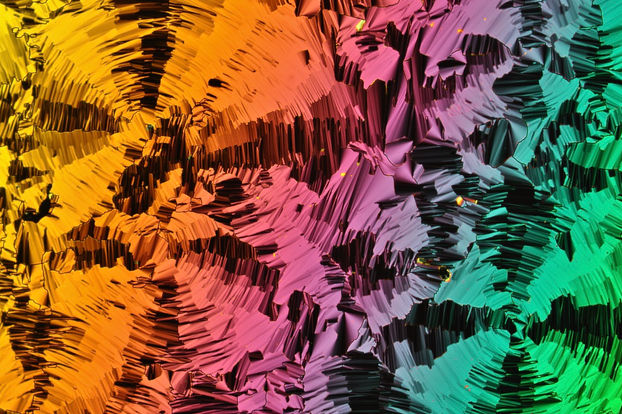Vance Williams
What was the inspiration behind your artwork?
I was first introduced to polarized optical microscopy as an undergraduate more than 25 years ago. I used this technique to study liquid crystals, the strange materials found in display devices and mood rings. We still use this method to analyze materials made in my lab. This image was a deliberate attempt to prepare a sample that was aesthetically pleasing rather than analytically useful. In other words, I was approaching the material with an artistic rather than a scientific sensibility.
What do you see as the similarity between science and art? Why is science-art important in today's society?
Both science and art are intensely creative, experimental and exploratory callings. Although the practices artist and scientists may be radically different, both groups seek deeper truths about the world we inhabit.
I view art as an invaluable tool for science communication. Scientists often struggle to convey their ideas to the general public, in part because they rely on the same style of communication that they would use with other scientists. Such jargon-laden arguments based on facts, statistics and logic are poor emissaries for the ideas encompassed by science. Art has the ability to engage on a visceral level, opening the door to a more meaningful dialog between science and society.
Get to know the artist!
Vance Williams, Professor and Chair, Department of Chemistry, Simon Fraser University
Get in touch!
Follow Vance on Instagram: @vance.williams






